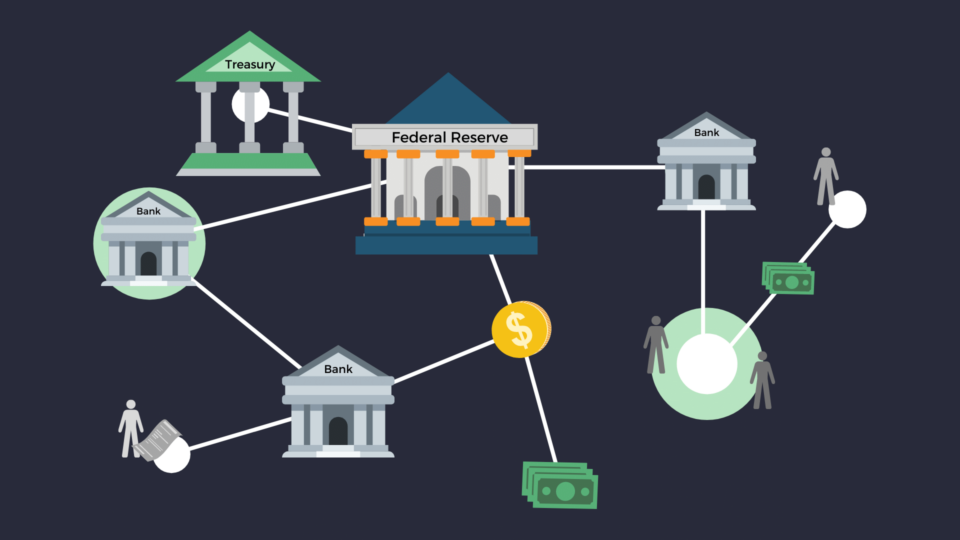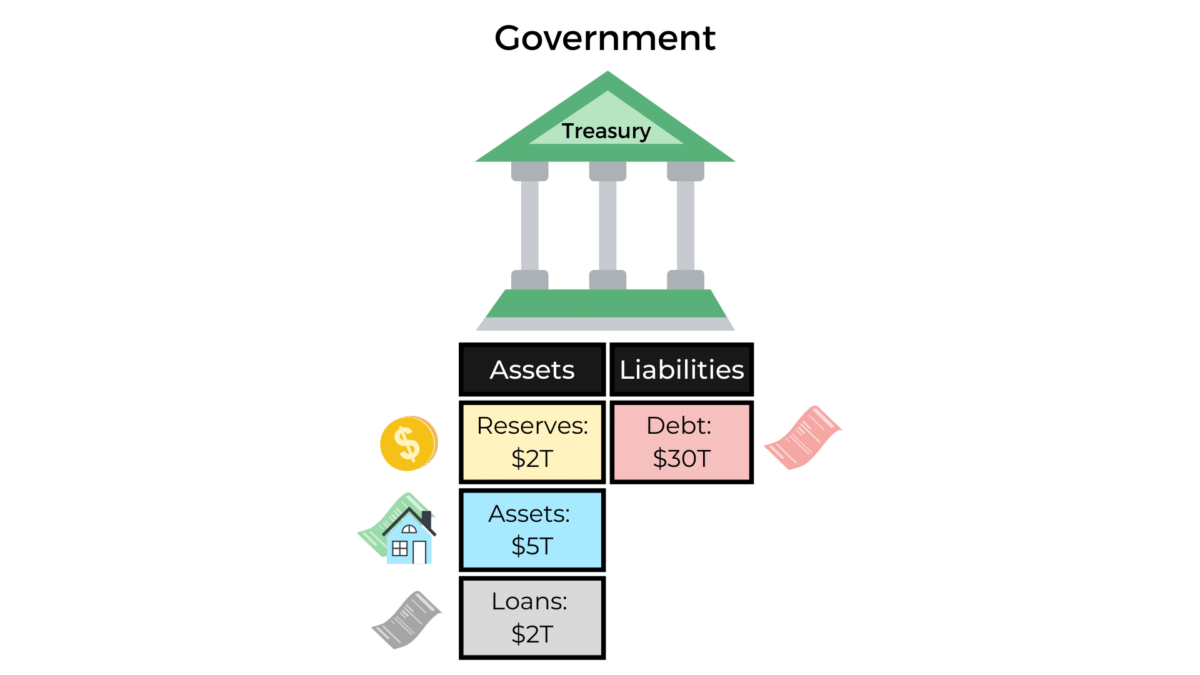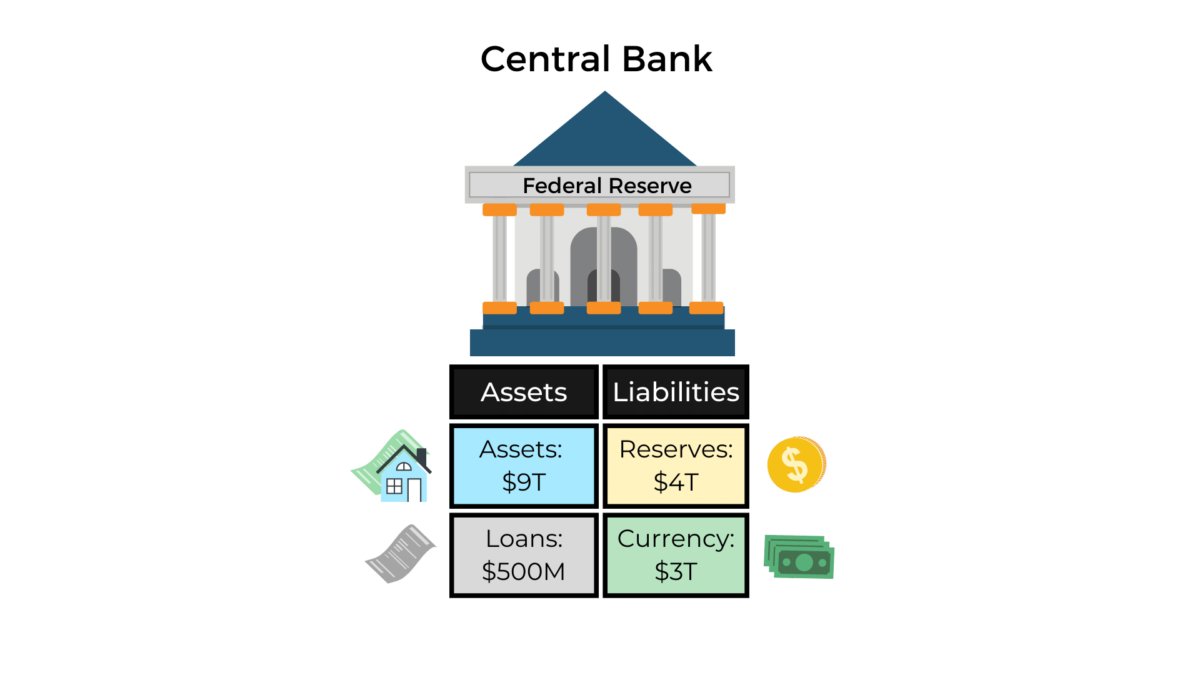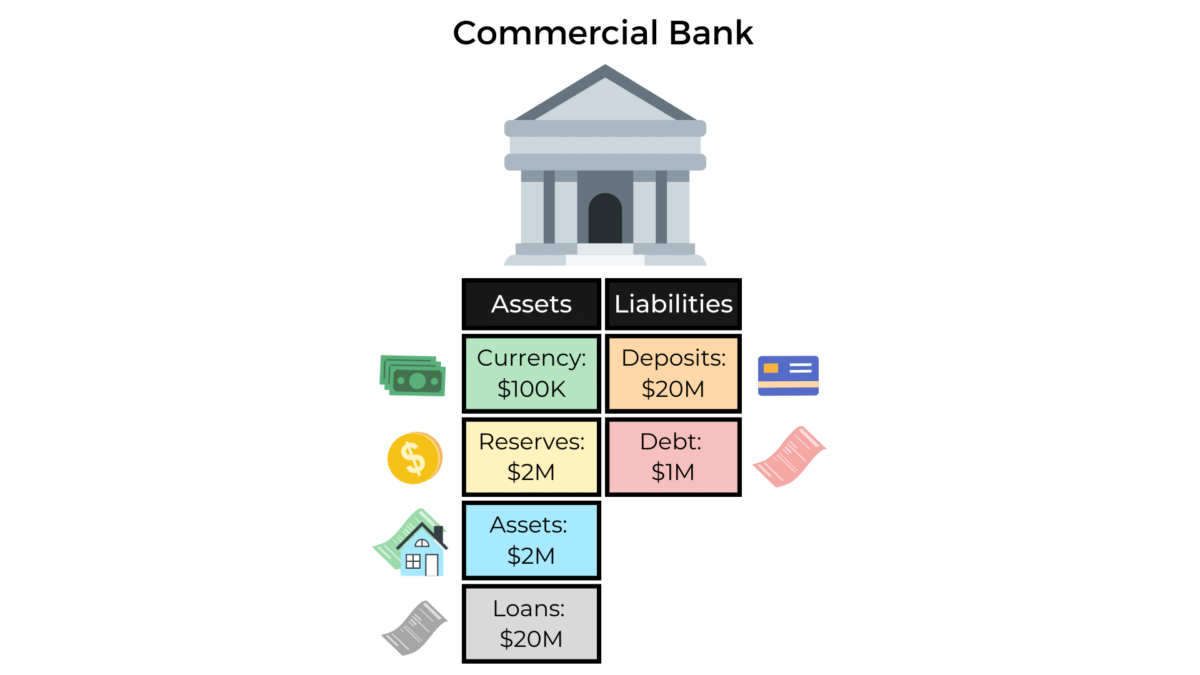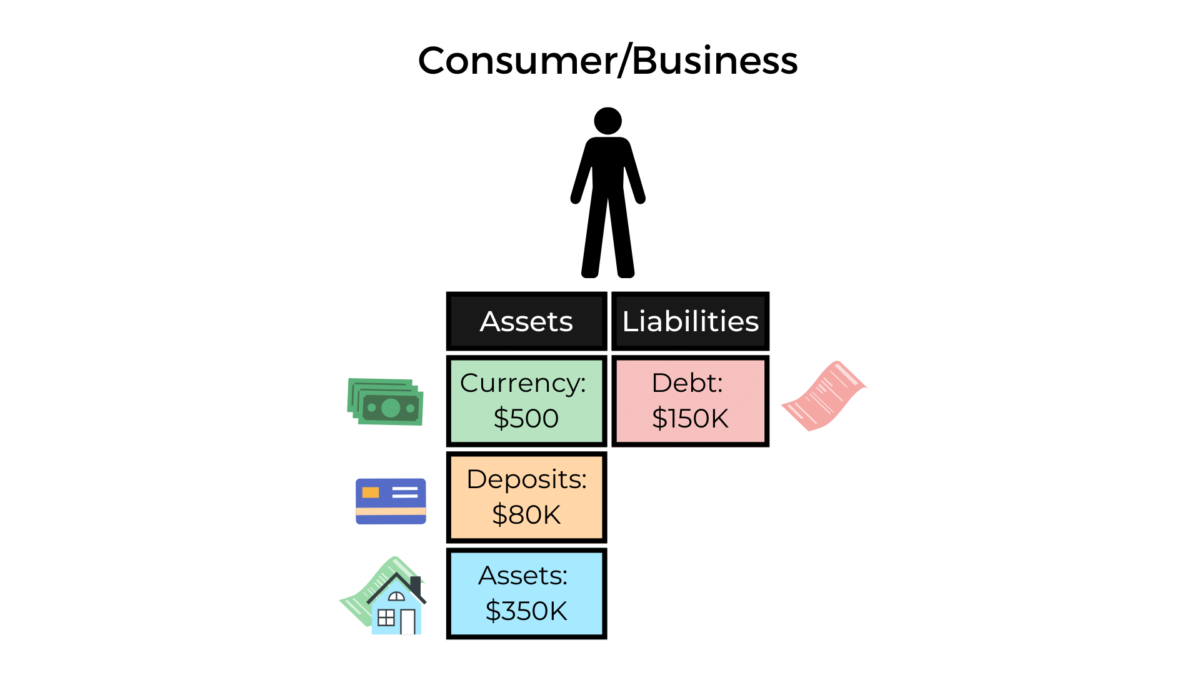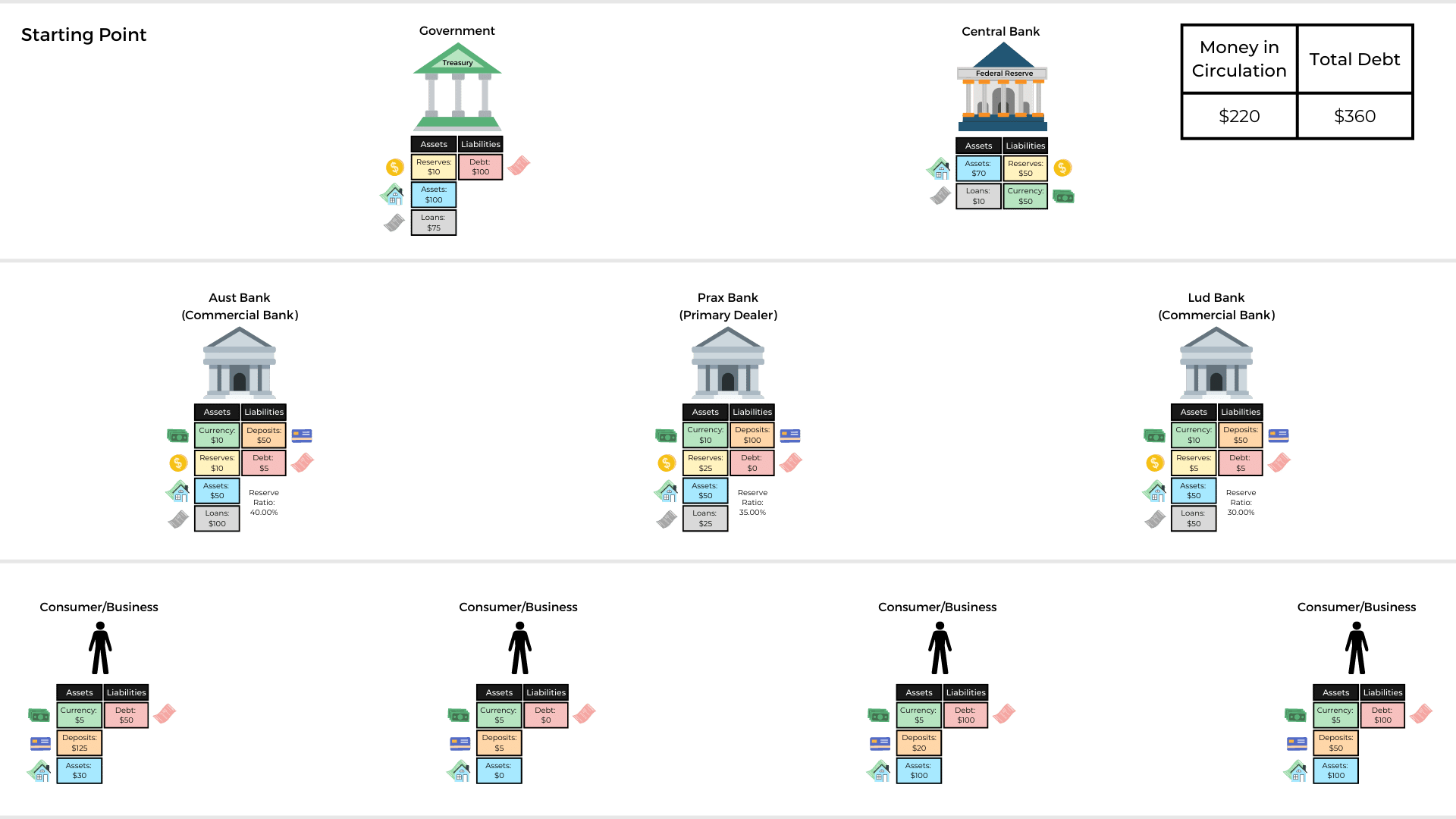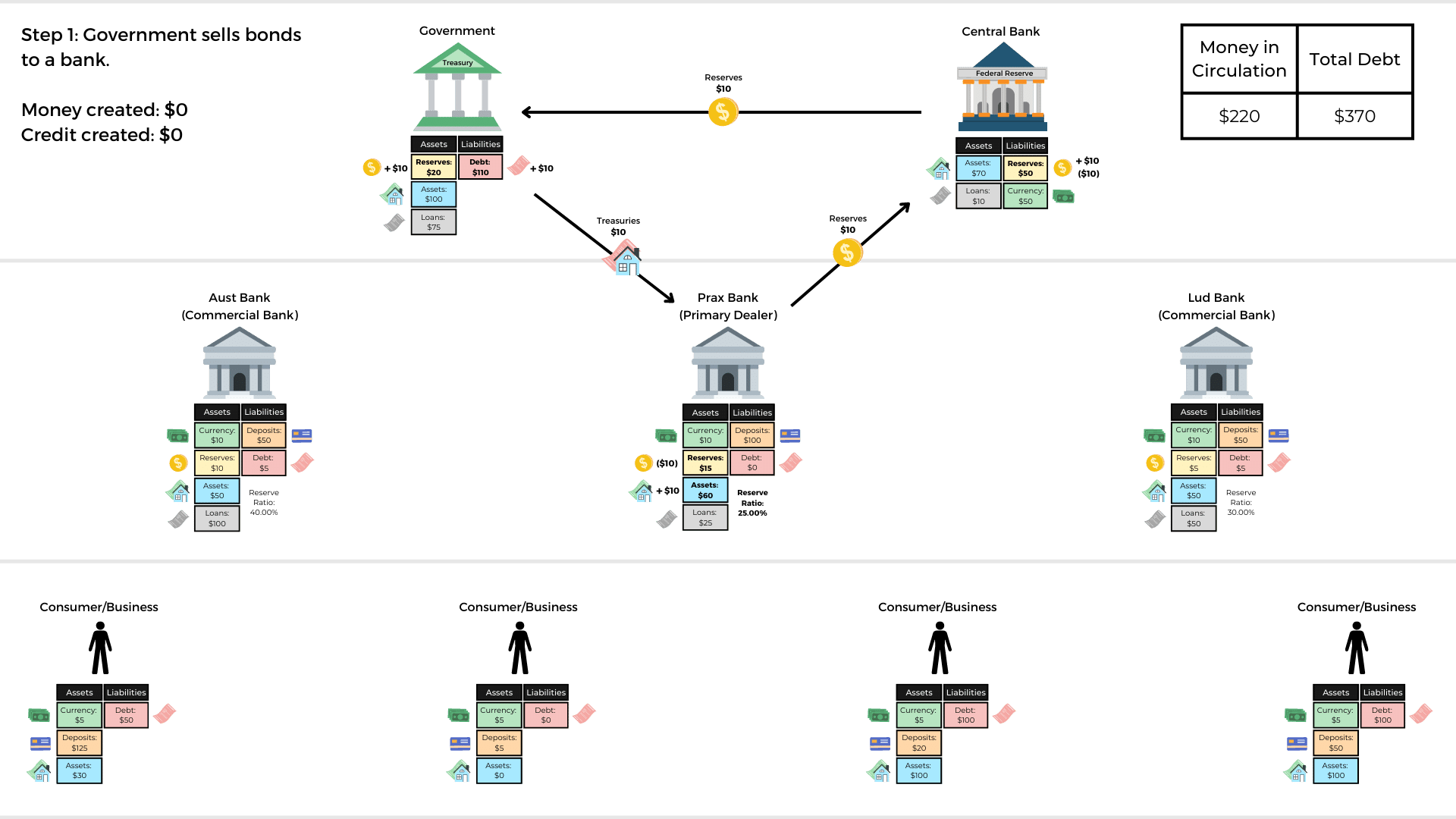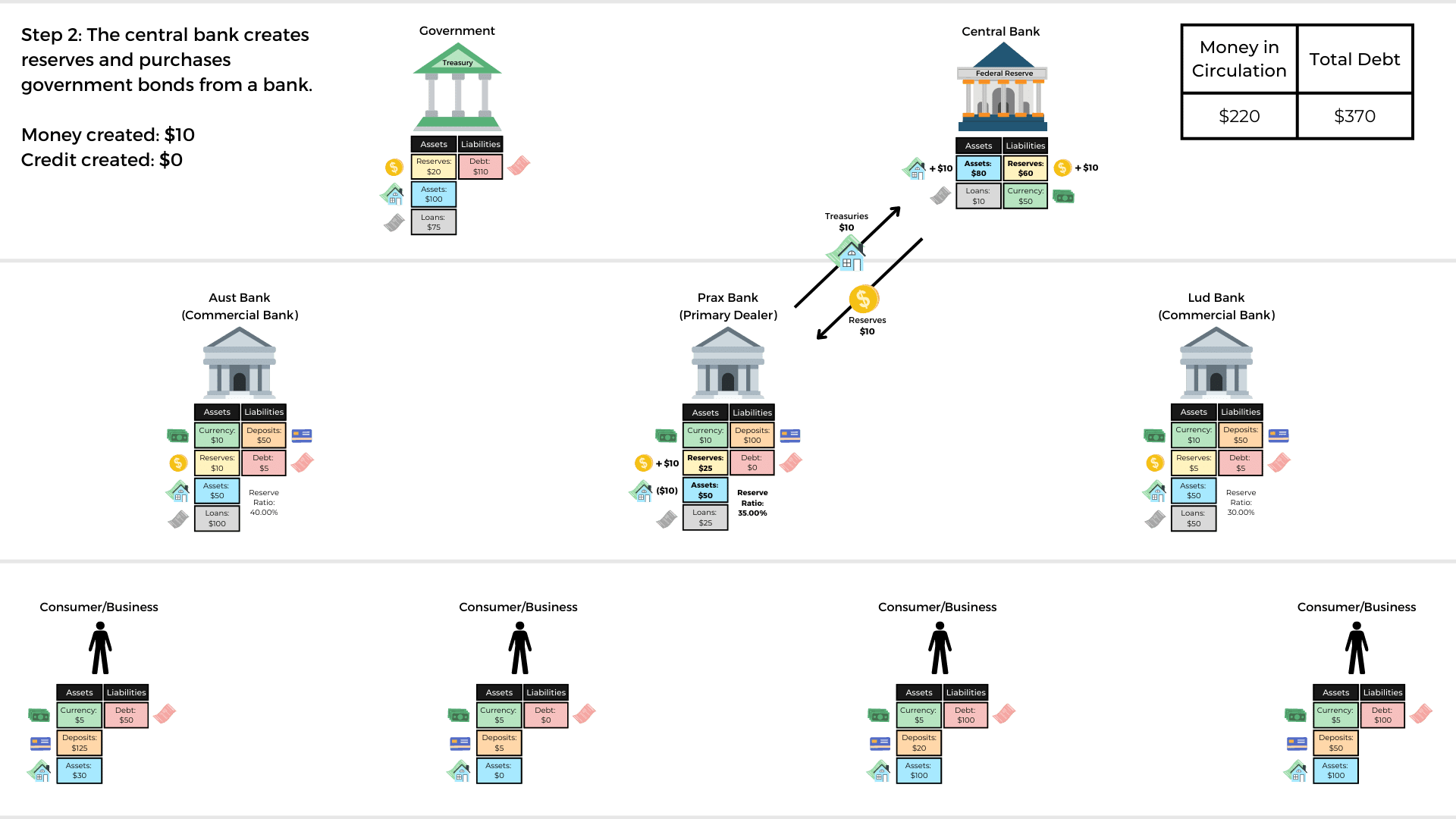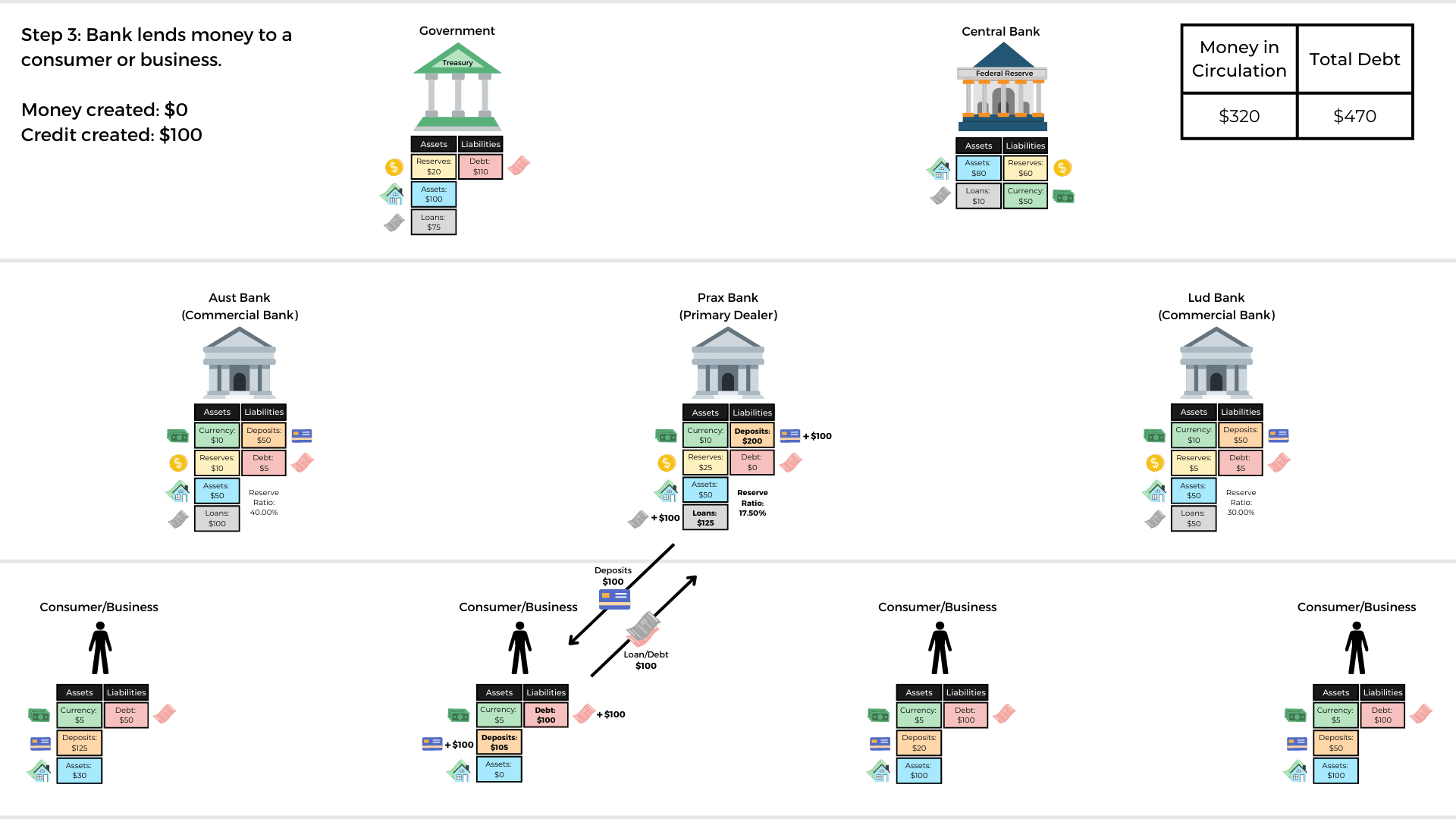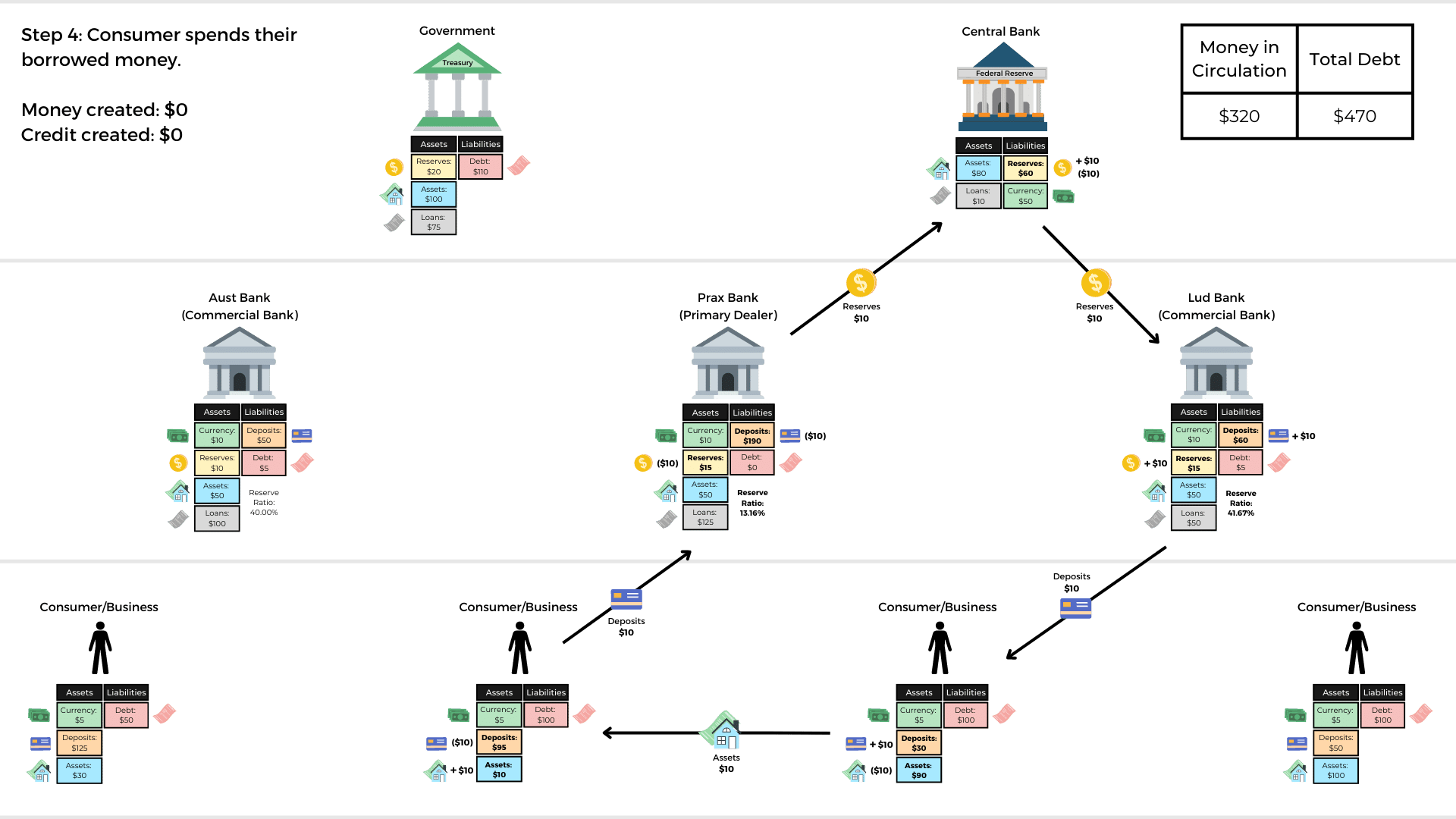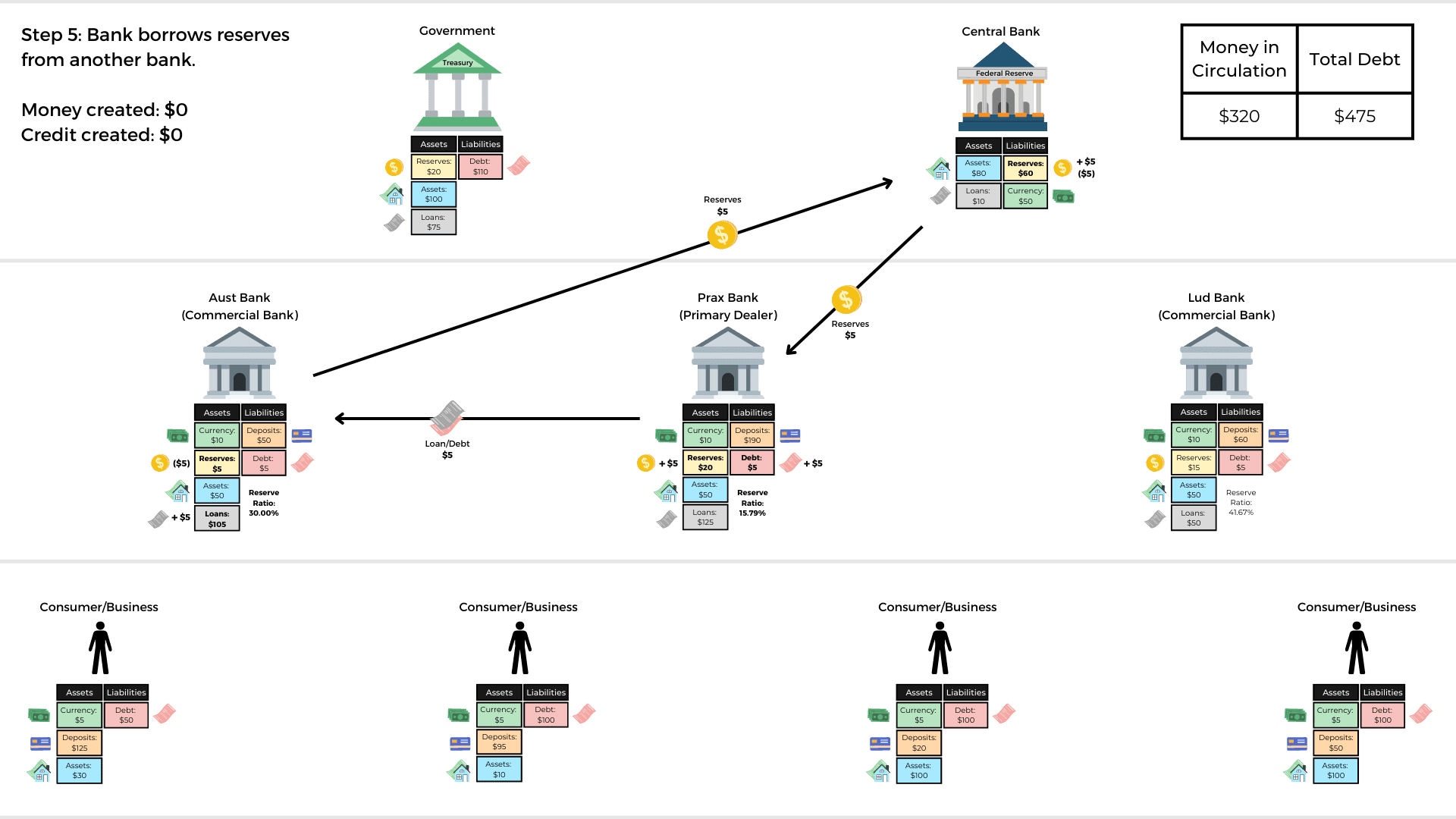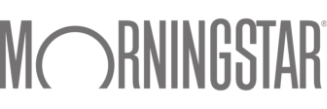Ever wondered how banks create money? This article explains how the government, central bank, and commercial banks work together to manage money creation.
Institutions Involved in Money Creation
To understand modern money, we must first understand the four entities involved:
- Federal government (issues government bonds, collects taxes, and manages federal expenses)
- Central bank (the “bank’s bank”: stores reserves on behalf of the government and commercial banks, controls monetary policy)
- Commercial bank (stores deposits on behalf of consumers and businesses, gives out loans)
- Consumer/business (keeps money at commercial banks, takes out loans, trades goods, services, and labor in the economy)
Balance Sheet Construction
We also must understand the structure of assets and liabilities for each institution. Each entity has a unique balance sheet construction.
Government (Treasury) Balance Sheet:
Central Bank (Federal Reserve) Balance Sheet:
Commercial Bank Balance Sheet:
Consumer/Business Balance Sheet:
The U.S. Economic Players
The figures below are indicative of the U.S. economy.
Balance Sheet Categories
Currency
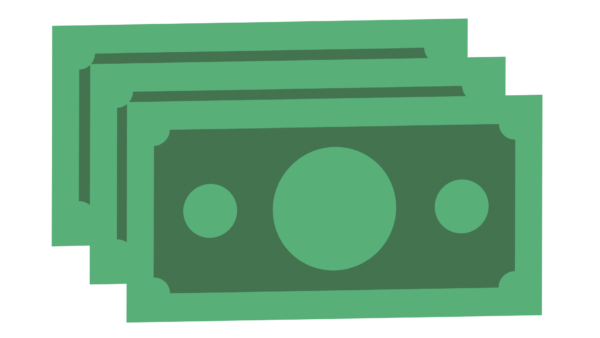
Currency refers to physical banknotes and coins. Physical cash only makes up a small portion of the money supply. Most money exists in the form of credit.
For commercial banks, consumers, and businesses, currency is an asset. For the central bank, currency is a liability.
Deposits
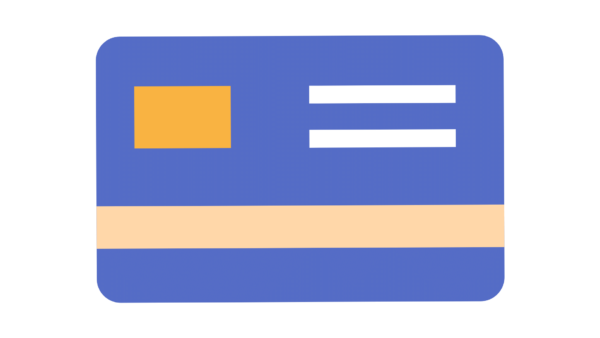
Deposits refer to funds that consumers and businesses hold in their bank accounts. They represent the amount of money the bank owes the depositor, not the amount of money physically stored in a vault somewhere. Deposits spend like currency, but really only exist on a computer screen. At any time, deposits can be withdrawn from the bank and turned into physical currency.
For consumers and businesses, deposits are an asset. For banks, deposits are a liability.
Reserves
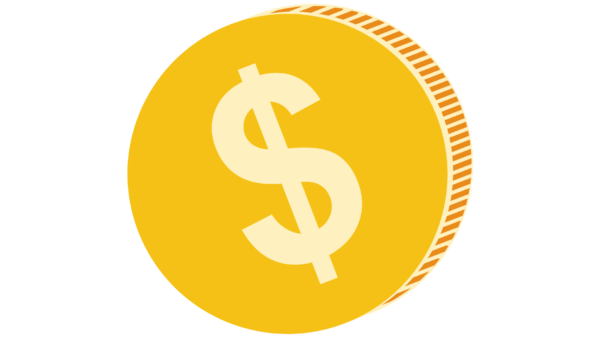
Reserves refer to the funds that commercial banks and governments hold at the central bank. You will sometimes see them referred to as “bank money” because only commercial banks and the federal government can hold reserves. The central bank manages the total supply of reserves available to the banking system. The Fed usually increases reserves by loaning money to commercial banks or purchasing assets in the open market.
Generally speaking, reserves alone are not inflationary. If the central bank increases total reserves, the extra money does not necessarily end up circulating throughout the economy. They are more likely to boost asset prices than cause consumer price inflation. For example, in the years following the Global Financial Crisis, the Fed drastically increased the supply of bank reserves with its quantitative easing program. Despite trillions of freshly printed dollars, consumer inflation remained low. This is because the money stayed parked in the financial system.
The Fed sets reserve requirements for every commercial bank. If the reserve requirement is 10%, a bank’s total reserves must add up to at least 10% of outstanding deposits.
For the government and commercial banks, reserves are an asset. For the central bank, reserves are a liability.
Assets
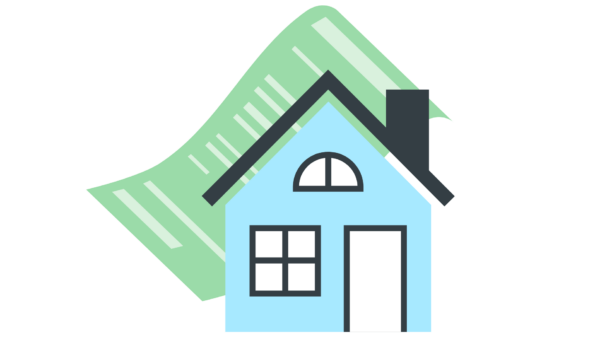
Assets refer to property, equipment, securities, and resources. Every economic participant can hold assets. Consumers, businesses, and banks typically own stocks, bonds, real estate, and other tangible assets. Central banks typically own government bonds.
Some assets correspond with a liability. For example, a consumer may own a house and have a mortgage. The liability also may be on someone else’s balance sheet. For example, the Federal Reserve holds treasuries and mortgage-backed securities, which are backed by government or consumer debt. Other assets have no corresponding liability. If an investor buys a bar of gold with cash, the asset is not connected to someone else’s liability.
Loans
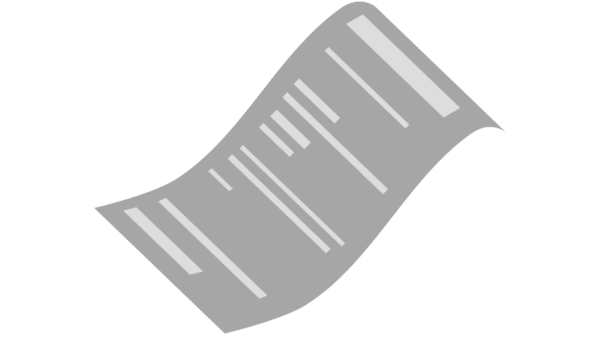
Loans refer to contracts between a lender and a borrower. The borrower is expected to pay the lender back with interest.
Commercial banks give out loans to consumers and businesses. The government also gives out business loans and student loans. Commercial banks with excess reserves may also loan money to other commercial banks through the interbank lending market.
The central bank gives out loans to commercial banks. These loans increase drastically during times of financial stress, such as the Global Financial Crisis and COVID-19.
Loans are assets. However, they always correspond with a liability (a debt) on someone else’s balance sheet.
Debt
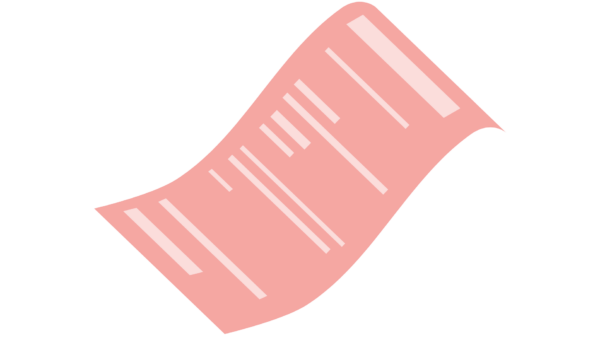
Debt is the liability side of a loan. Consumers may take on debt to pay for a house or education. Banks may take on debt to cover business expenses or borrow from other banks to meet reserve requirements. The government takes on debt by issuing bonds.
Debts are liabilities for every financial entity.
How Banks Create Money
The following model demonstrates how financial institutions exchange assets and liabilities to create money. In this example economy, there is one central bank, three commercial banks, and four consumers/businesses.
The institutions are divided into three categories: the government (Treasury) and the central bank (Federal Reserve) on top, commercial banks in the middle, and consumers and businesses on the bottom.
To start, we will assume there is $220 in circulation. To calculate the amount of money in circulation, we add currency held by the public and total checking deposits (the definition of M1 money supply).
We will also assume there is $360 of total debt, split between all the financial entities.
The model emphasizes five steps of the money creation process:
- Government sells bonds to a bank.
- The central bank creates reserves and purchases government bonds from a bank.
- Bank lends money to a consumer or business.
- Consumer spends their borrowed money.
- Bank borrows reserves from another bank.
Double-Entry Bookkeeping
Our financial system relies on double-entry bookkeeping, where every debit corresponds with a credit. An arrow pointing to an institution denotes a debit (addition of an asset or subtraction of a liability). An arrow pointing away from an institution denotes a credit (subtraction of an asset or addition of a liability). If an institution is involved in a transaction, it will have exactly one arrow pointing toward it and one pointing away. When assets change hands, it is always the result of an exchange.
Goethe described double-entry bookkeeping as “one of the most beautiful discoveries of the human spirit.” Who would guess such high praise for a dry method of accounting would come from someone who dedicated his life to poetry, aesthetics, and literature?
Step 1: Government sells bonds to a bank.
The Treasury only sells bonds to a special class of commercial bank, known as a primary dealer. Wells Fargo, Bank of America, Morgan Stanley, and Deutsche Bank are all primary dealers. The government sells treasury securities at auction, where primary dealers make competitive bids. This creates an initial market for government bonds.
The primary dealer cannot send reserves directly to the government. Every time reserves change hands, the central bank clears the transaction.
When the primary dealer buys government bonds, the Fed credits reserves from the primary dealer’s account and debits them to the Treasury’s account.
Why does the government sell bonds?
If government expenditures exceed tax revenues, they must cover the difference by selling bonds. Government borrowing allows current taxpayers to enjoy the benefits of public spending without actually paying taxes. The debt burden is simply pushed to future generations (as you might guess, this causes major problems when the future actually arrives).
The government may send the newly borrowed money to Lockheed Martin or Boeing in exchange for new military aircraft, allocate it to the salary of a TSA agent, or use it to build roads, bridges, and public housing.
Government bonds also serve as the primary tool for implementing monetary policy. The United States is in a unique position because it controls the global reserve currency: the US dollar. Foreign governments and central banks typically hold a large share of US dollars and US Treasury bonds in their foreign exchange reserves. As a result, US capital markets are very deep, liquid, and stable.
Step 2: The central bank creates reserves and purchases government bonds from a primary dealer.
To purchase government securities in the open market, the Fed simply debits the new reserves to the primary dealer’s account.
New reserves are created, although no physical currency printing is required. The vast majority of modern money is created with the stroke of a keyboard.
When making a purchase, the central bank creates its own liability. “Base money” (currency + reserves) is a liability for the central bank and an asset for everyone else.
Notice that this step increased Prax Bank’s reserve ratio, which means it has plenty of room to create new deposits. Step 3 demonstrates this process.
Why doesn’t the Fed just buy government bonds directly from the Treasury?
Because it is not legal. The Federal Reserve Act states that the Fed is only allowed to purchase securities through the “open market.” Therefore, primary dealers must act as an intermediary for Fed asset purchases.
Besides, the point of Fed asset purchases is to increase the supply of reserves in the banking sector. Commercial banks then circulate that money through the economy by creating new loans and deposits.
Quantitative Easing
In recent decades, central bank asset purchases have exploded. In response to the ’08–’09 Global Financial Crisis, the Federal Reserve embarked on a controversial quantitative easing campaign, which flooded the banking system with trillions of dollars in reserves and created massive artificial demand for government securities.
Prior to the GFC, monetary policy focused on interest rates. That changed when interest rates hit zero in December 2008. To stimulate economic growth, the Fed had to resort to more extreme strategies.
From September 2008 to January 2015, the Fed balance sheet increased from $900 billion to $4.5 trillion. During COVID-19 (from February 2020 to April 2022) the Fed balance sheet doubled again.
Step 3: Bank lends money to a consumer or business.
Consumers and businesses borrow money for mortgages, business loans, and other reasons. Notice the lending process increases the amount of money in circulation and total debt by an equivalent amount (in this case, $100).
When a commercial bank lends out money, they simultaneously create a loan and a deposit.
The loan is an asset for the bank and a liability for the consumer. The deposit is a liability for the bank and an asset for the consumer. When new deposits are created in this way, the money supply increases. The consumer now has money that did not previously exist.
However, this purchasing power comes at a cost. The borrower now carries a debt burden equal to his increase in purchasing power. New purchasing power was not created per se; it was shifted from the future to the present. The borrower must sacrifice future consumption to pay back the full value of his loan, plus an additional payment every year (the interest rate).
It is misleading to say “banks create money.” Banks create credit. Credit feels like money, spends like money, but always corresponds to someone else’s debt.
The Risks of Borrowed Money
The more credit is created, the more purchasing power is pulled from the future into the present. When the future finally arrives, there might not be any purchasing power left. To stay solvent, consumers, businesses, and governments must acquire more and more debt, pulling more and more purchasing power from even further in the future.
History is riddled with episodes of excessive credit creation which caused asset bubbles, inflation, and extreme wealth inequality.
This pattern may also lead to a debt crisis, where public and private borrowers eventually fail to find lenders willing to support their unquenchable thirst for credit. When the lending stops, borrowers can no longer pay back their loans. Borrowers suddenly default on their debt obligations, and loan assets start evaporating from lenders’ balance sheets. This leads to a collapse of the money supply and a recession: bankruptcies, unemployment, and a downturn in economic activity.
Limits on Loans
It is important to note that while reserve requirements do technically place a limit on bank loans, the effect may not be as pronounced as it is described in economics textbooks.
Textbooks model the credit creation process by showing that banks lend out a portion of deposits. For example, if a consumer deposits $100 in Prax Bank and the reserve requirement is 10%, Prax must keep $10 in reserves and can lend out $90. That $90 is deposited at another bank, which turns around and lends out $81, and then $72.90, and so on.
This illustration is not necessarily wrong, but gives an incomplete picture of how the economy functions under a modern central bank. Banks tend to give out loans first and cover their reserve obligations later.
When a borrower seeks a loan, the bank nearly always lends the money, no matter their reserve balance. If the new loan increases deposits beyond the legal limit, the bank simply borrows reserves to cover the difference. Banks prefer to borrow reserves from other commercial banks (see step 5), but they may also borrow from the central bank.
Banks can basically loan as much money as they want. When it comes to writing loans, banks are primarily concerned with staying profitable and maintaining capital requirements. Capital requirements are regulations designed to lower the total risk of banks’ asset holdings and make sure they have enough liquid capital to cover their obligations. For example, banks are not permitted to lend a bunch of money to super-risky borrowers for a 30% interest rate because this would substantially increase the risk of default.
Step 4: Consumer spends their borrowed money.
The consumer can transfer their deposits to another consumer or business via check, bank wire, or ACH. (Credit card transactions are also similar to the diagram above.)
The transaction happens between two consumers/businesses (a buyer and a seller), although the funds are actually exchanged between two banks. Banks use their reserves at the Federal Reserve to cover the transaction. When the buyer spends their deposits, the buyer’s bank (Prax Bank) transfers some of its reserves to the seller’s bank (Lud Bank).
Since the Federal Reserve Act of 1913, all checks, wires, and other deposit transfers have been cleared through the Fed. When Prax Bank sends funds to Lud Bank, the Federal Reserve debits Prax’s reserve account and simultaneously credits Lud’s reserve account. Prax Bank loses deposits and reserves. Lud Bank gains deposits and reserves.
If, through this process, Prax Bank’s reserve account goes negative, the Fed will automatically lend it enough reserves to cover the transaction. Prax Bank must then borrow reserves at the end of the day to clear the overdraft. Prax Bank will most likely borrow these reserves from another commercial bank (see step 5).
Banks don’t need your deposits
In this step, Lud Bank’s deposits and reserves increased by the same amount. This increased Lud’s reserve ratio to 41.67%, which means the bank has plenty of excess reserves to back new loans.
However, as we discussed in step 3, this is typically not the motivation for issuing loans. If people want loans, banks give them. That’s how banks make money. Reserve requirements are an afterthought, because they can simply borrow reserves from other commercial banks or the Fed if they need them to to meet legal requirements.
Banks don’t really need consumer deposits and corresponding reserves. So why do they seek them out?
Banks are happy to take your deposits because consumer deposits are the cheapest way to increase reserves.
It all comes down to the interest rate. When a bank borrows money from a consumer or business (in the form of checkable deposits, a.k.a. your “checking account”), it pays almost no interest. If the same bank were to borrow $10 of reserves from another commercial bank, it would have to pay the fed funds rate. If it were to borrow $10 of reserves from the central bank, it would have to pay an even higher interest rate, known as the discount rate.
Step 5: Bank borrows reserves from another bank.
At the end of step 4, Prax Bank ended up with total deposits of $190. Prax Bank has $25 in total reserves ($10 of physical currency plus $15 stored at the Fed). This gives Prax Bank a reserve ratio of 13.16% ($25 of reserves divided by $190 of deposits).
Let’s assume the required reserve ratio is 15%. Prax bank must find a way to increase reserves to stay compliant.
Interbank Lending
Prax Bank does so by borrowing excess reserves from Aust Bank. Aust Bank has excess reserves, so is happy to lend a portion out to Prax Bank for a small fee. Prax Bank borrows $5 from Aust Bank and agrees to return the funds (plus a little interest) the next day.
This happens through the interbank lending market.
The rate at which commercial banks lend to each other is known as the federal funds rate. When we say “the Fed is raising rates,” we mean they are raising their target for the federal funds rate. This rate is not written into law, but rather a target that the Fed maintains through monetary policy. If the actual lending rate between banks rises above the Fed’s target, they will increase the supply of bank reserves. This lowers interest rates by making interbank loans easier to find. Likewise, if the interbank lending rate falls below the Fed’s target, they will decrease the supply of bank reserves, therefore raising interest rates.
The Fed primarily controls the total supply of reserves through open market operations.
Borrowing from the Fed
If Prax Bank is unable to borrow the necessary reserves from another commercial bank, it may borrow them from the central bank. One of the Fed’s duties is to serve as a “lender of last resort.”
The Fed loans money to commercial banks through a lending facility known as the “discount window.” Central bank lending increases drastically during times of financial stress, such as the GFC and COVID-19. The discount window is designed to maintain liquidity and stability in the nation’s banking system.
The Impact of Money Creation
Our model economy started with $220 in circulation and $360 in total debt.
By the end of step five, the money supply had increased by $100. Only $10 can be attributed to the central bank; the other $90 was created through commercial bank lending.
Total debt increased by $115. The government took on $10 of debt when it sold government bonds in step 1. The consumer took on $100 of debt when he took out a loan in step 3. Finally, Prax Bank took on $5 of debt when it borrowed $5 on a short-term basis from Aust Bank in step 5.
At the end of all five steps, we had $320 in circulation and $475 in debt.
It is important to note that these five steps do not always occur in the order outlined above. In the real world, the steps occur simultaneously, millions of times across the entire economy.
Secure gold savings, without the excessive fees
This commentary comes from Vaulted’s internal team of researchers and technical experts. Vaulted gives modern investors access to physical gold ownership at the best cost structure in the industry. With personal advising from industry experts and access to premier precious metals strategies, Vaulted is the key to life-long financial prosperity. Start protecting your portfolio today.
As always, thank you so much for reading – and happy investing!
Sources
Federal Reserve balance sheet construction and credit programs: https://www.federalreserve.gov/monetarypolicy/bst_recenttrends.htm
Balance sheet construction and financial position of commercial banks in the United States: https://fred.stlouisfed.org/release/tables?rid=22&eid=822916
Money supply definition: https://www.federalreserve.gov/faqs/money_12845.htm
Federal Reserve Balance Sheet Chart: https://www.federalreserve.gov/monetarypolicy/bst_recenttrends.htm
Federal Funds Rate Information and Chart: https://fred.stlouisfed.org/series/FEDFUNDS
Fed Discount Window: https://www.federalreserve.gov/regreform/discount-window.htm

